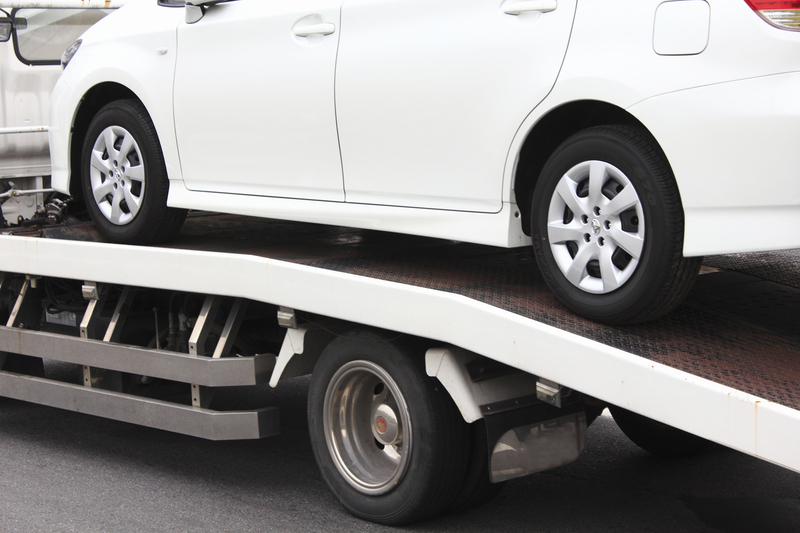Packing Tools for Moving Day
Posted on 22/01/2025
```html
Moving day can be an exhilarating yet daunting experience, and having the right packing tools can make all the difference between a smooth transition and a chaotic ordeal. From choosing the right type of boxes to investing in essential moving accessories, we'll cover key packing tools to help you streamline your move. In this article, we will explore various packing tools for moving day, discuss their pros and cons, and offer tips for an organized and efficient move.
Sturdy moving boxes are an absolute must when moving. They come in various sizes, which allow you to pack different types of items securely. Small boxes are perfect for books and kitchenware, medium boxes for electronics and toys, and large boxes for linens and bulkier items.
Investing in high-quality packing tape is crucial to ensure your boxes remain sealed during the move. A packing tape dispenser allows you to quickly and efficiently seal boxes without struggling to find the end of the tape roll.
Fragile items need extra care, so having ample bubble wrap and packing paper is essential. These materials offer cushioning to prevent damage during transit. Bubble wrap is ideal for wrapping glassware and electronics, while packing paper is perfect for dishes and other delicate items.
To protect your furniture from scratches, dents, and other damage, moving blankets and furniture pads are indispensable. They provide a layer of protection for your furniture and ensure it arrives at your new home unscathed.
Proper labeling and categorizing of boxes make unpacking a breeze. Use markers to label each box with its contents and the room it belongs to. This system will save you time and effort during the unpacking process.
Plastic wrap is useful for keeping items secure and protected. It can be used to bundle items together or to cover drawers and shelves to prevent them from sliding out during the move.
Having a pair of scissors and a box cutter on hand makes it easy to cut packing materials and open boxes quickly.
Protect your mattresses from dirt, moisture, and damage by using mattress bags. These are especially useful if you need to store your mattress for any period during the move.
Pros:
- **Organization:** Proper packing tools help keep your move organized, reducing stress.
- **Protection:** Using the right materials minimizes the risk of damage to your belongings.
- **Efficiency:** Packing becomes more straightforward and faster.
- **Safety:** Minimizes the risk of injury by securely packing and moving items.
Cons:
- **Cost:** Purchasing all these tools can add to the overall moving expense.
- **Time:** Gathering and using these tools can be time-consuming.
- **Waste:** Some materials, especially plastic wraps and tapes, generate waste and may not be environmentally friendly.
1. **Plan Ahead:** Start collecting packing materials well in advance.
2. **Declutter:** Before packing, get rid of items you no longer need.
3. **Inventory:** Make an inventory of your items to ensure nothing gets lost.
4. **Pack Strategically:** Pack items you use infrequently first and essential items last.
5. **Hire Professionals:** For heavy or valuable items, consider hiring professional movers.
- Sturdy moving boxes and high-quality packing tape are essential for a successful move.
- Protect fragile items with bubble wrap and packing paper.
- Utilize labels and markers to stay organized.
- Moving blankets and furniture pads protect large items from damage.
- Additional tools like plastic wrap, scissors, and mattress bags can make the process smoother.
Moving day doesn't have to be stressful if you have the right packing tools at your disposal. By investing in essential packing materials and following our practical tips, you can ensure a seamless transition to your new home. Remember the pros and cons to make informed decisions and take advantage of available resources for an efficient move. Careful planning, organization, and the right tools will help you tackle moving day with confidence.
```
Introduction
Moving day can be an exhilarating yet daunting experience, and having the right packing tools can make all the difference between a smooth transition and a chaotic ordeal. From choosing the right type of boxes to investing in essential moving accessories, we'll cover key packing tools to help you streamline your move. In this article, we will explore various packing tools for moving day, discuss their pros and cons, and offer tips for an organized and efficient move.

Essential Packing Tools
1. Sturdy Moving Boxes
Sturdy moving boxes are an absolute must when moving. They come in various sizes, which allow you to pack different types of items securely. Small boxes are perfect for books and kitchenware, medium boxes for electronics and toys, and large boxes for linens and bulkier items.
2. Packing Tape and Dispenser
Investing in high-quality packing tape is crucial to ensure your boxes remain sealed during the move. A packing tape dispenser allows you to quickly and efficiently seal boxes without struggling to find the end of the tape roll.
3. Bubble Wrap and Packing Paper
Fragile items need extra care, so having ample bubble wrap and packing paper is essential. These materials offer cushioning to prevent damage during transit. Bubble wrap is ideal for wrapping glassware and electronics, while packing paper is perfect for dishes and other delicate items.
4. Moving Blankets and Furniture Pads
To protect your furniture from scratches, dents, and other damage, moving blankets and furniture pads are indispensable. They provide a layer of protection for your furniture and ensure it arrives at your new home unscathed.
5. Labels and Markers
Proper labeling and categorizing of boxes make unpacking a breeze. Use markers to label each box with its contents and the room it belongs to. This system will save you time and effort during the unpacking process.
Additional Packing Tools
6. Plastic Wrap
Plastic wrap is useful for keeping items secure and protected. It can be used to bundle items together or to cover drawers and shelves to prevent them from sliding out during the move.
7. Scissors and Box Cutters
Having a pair of scissors and a box cutter on hand makes it easy to cut packing materials and open boxes quickly.
8. Mattress Bags
Protect your mattresses from dirt, moisture, and damage by using mattress bags. These are especially useful if you need to store your mattress for any period during the move.
Pros and Cons
Pros:
- **Organization:** Proper packing tools help keep your move organized, reducing stress.
- **Protection:** Using the right materials minimizes the risk of damage to your belongings.
- **Efficiency:** Packing becomes more straightforward and faster.
- **Safety:** Minimizes the risk of injury by securely packing and moving items.
Cons:
- **Cost:** Purchasing all these tools can add to the overall moving expense.
- **Time:** Gathering and using these tools can be time-consuming.
- **Waste:** Some materials, especially plastic wraps and tapes, generate waste and may not be environmentally friendly.
Tips for an Efficient Move
1. **Plan Ahead:** Start collecting packing materials well in advance.
2. **Declutter:** Before packing, get rid of items you no longer need.
3. **Inventory:** Make an inventory of your items to ensure nothing gets lost.
4. **Pack Strategically:** Pack items you use infrequently first and essential items last.
5. **Hire Professionals:** For heavy or valuable items, consider hiring professional movers.

Takeaways
- Sturdy moving boxes and high-quality packing tape are essential for a successful move.
- Protect fragile items with bubble wrap and packing paper.
- Utilize labels and markers to stay organized.
- Moving blankets and furniture pads protect large items from damage.
- Additional tools like plastic wrap, scissors, and mattress bags can make the process smoother.
Conclusion
Moving day doesn't have to be stressful if you have the right packing tools at your disposal. By investing in essential packing materials and following our practical tips, you can ensure a seamless transition to your new home. Remember the pros and cons to make informed decisions and take advantage of available resources for an efficient move. Careful planning, organization, and the right tools will help you tackle moving day with confidence.
```



